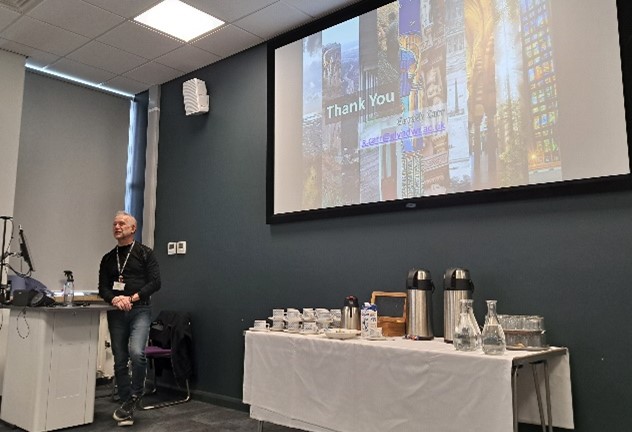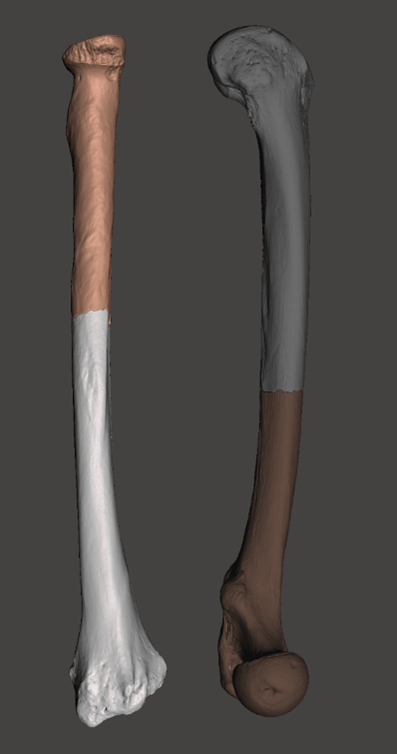FAST Research Seminar Series #2 – Science
The second session in the FAST seminar series took place at the beginning of November with Dr Jixin Yang chairing.
A last-minute change of speaker meant that Dr Gareth Carr from Built Environment presented on ‘Subliminal Messaging in Religious Architecture’.
Gareth spoke of growing up in Port Talbot with other kids and meeting them at the local mountain, on which someone had graffitied ‘18:2’, a bible verse, “the lord is my rock”. The mountain was known colloquially as the lord is my rock with locals not understanding the origin until the graffiti appeared. This showcased the influence and impact of religion on local structures.

Gareth then took us through the ages, showcasing how religious architecture was also influenced by natural surroundings, with contrasts drawn between Antonio Gaudi’s famous Sagrada Familia in Spain and the natural rock faces.
Some buildings detail overt religious messaging, such as the Cathedral of Orvieto in Italy, depicting the pained and tortured faces of those who didn’t follow the faith. Others contain more subtle and hidden meanings, such as the stone pillars atop carved turtles on Sagrada Familia, sending a strong message about stability, but not explicitly religious.
Other images were shown of Northern European Gothic architecture and how it mirrors the dark and gloomy forests of the regions, with very tall spikey trees.
Gareth also talked through the skillset required by the architects when designing religious spaces, as they need to understand and fully appreciate not only the specific religious requirements of the space in terms of design, but also the wider use of such spaces including celebratory/commemorative events, community gatherings, religious offerings, and acoustic requirements to name just a few.

Our second speaker was PhD student, Rebekah Taylor, who joined the session via Teams on health grounds.
Rebekah’s topic was ‘3D reconstruction of Fragmented Human Remains in Forensic Anthropology’. Rebekah showed us 3D scanning techniques for virtual reconstruction of fractured bones. These techniques allowed for more accurate measuring and identification of bones, and one advantage was that missing bone fragments could be superimposed using the computer software.
Rebekah talked about the aim of creating Standard Operating Procedures in 3D reconstruction, so that tried and tested methods are established with repeatable results that could be used in a court of law to support juries in the same way DNA testing and Toxicology are used.
Rebekah talked through the positive results of the early-stage research, discussed known limitations and further opportunities and detailed that future PhD research will examine whole skeletons and investigate the accuracy of models, evaluate procedures, and transpose the techniques to contemporary remains.

Fascinating topics!
We look forward to seeing everyone at the next FAST Research Seminar on the 29th of November in B21, where it’s Computing and Engineering’s turn to showcase their research. We’ll be hearing from Dr Phoey Teh about Social Computing, and from Jhon Paul Roque on the Topological Optimisation of Shrouded Blade. There’s no need to book, just turn up. Refreshments will be provided.

